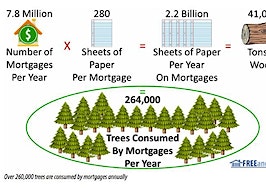- South Florida is overflowing with condos on the market, creating a real estate imbalance.
If there is another real estate implosion lurking down the road — and we’re not saying there is — the epicenter is likely to be in South Florida.
According to the latest tally from Condo Vulture Realty, developers have announced and are continuing to move forward with plans for more than 34,090 condo units in just the area east of Interstate 95 in Miami-Dade County.
That doesn’t count units west of I-95 or those in Broward and Palm Beach Counties to the north.
Based on 860 condo sales in the first quarter of the year in Miami-Dade, Condo Vultures figures there’s a 16-month supply of units available for purchase at a time the winter buying season is coming to an end.
A balanced market, says broker Peter Zalewski, is six months’ supply.
The brokerage’s numbers don’t quite add up. But it counts 428 towers that have been announced or started. Some 127 have been proposed, 80 more are planned and 177 are in pre-sales. Despite repeated attempts, broker Zalewski could not be reached for comment.
It is worth noting that nearly 6,700 units that had originally planned as condo units in coastal Miami-Dade have been yanked from the market by developers who are revising their current plans.
Miami-Dade ranks as the most active South Florida coastal region, which includes Broward and Palm Beach counties. It accounts for 71 percent of the more than 47,000 new South Florida units announced since the current real estate cycle began in 2011.
Nearly 13,800 condos are formally listed for sale in Miami-Dade. Currently, 1,770 units are under contract waiting to close. The average asking price of those apartments is nearly $427,550 each, whereas the typical asking price of listings that have yet to be sold is $918,120, more than twice the price of sold units.
The latest Condo Vulture report isn’t the only one to point to problems brewing. But it all depends on who you ask.
Dora Puig, who plies her trade in the luxury condo and home market of a million dollars or more, says 2016 was “very, very flat.”
“I wouldn’t call it a crash, but it was flat,” said Puig, who recently sold a three-bedroom, corner apartment in the Palazzo del Sol building on Fisher Island for $7.5 million. “Things were really slow up until the election, but since then, people know which way the economy is going and they are starting to act.”
She told Inman that she doesn’t believe some of the apartments counted by Condo Vulture will be built — “probably half of that,” she said.
Mark Mulligan of Summit Valuations, on the other hand, says the luxury market of $1 million or more “is saturated with inventory;” there are “fewer and fewer transactions.”
He counts a 55-month supply of unsold units in Miami-Dade, and a 29-month supply in neighboring Broward to the north. “Eventually,” he said, “those sellers are going to have to come to the realization that they must lower their prices.”
Mulligan says the affordable market — prices at $300,000 or below — is “much more balanced.” Here, he counts a four-month supply of apartments for sale.
The lack of foreign buyers is one reason for the slow market, according to Mulligan. Foreigners, particularly Latin Americans, tend to make up a larger share of the high-end market, but “they are not materializng like they used to,” he said.
Asked to look at the South Florida on behalf of Inman, Thomas Hoff of Pro-Teck Valuation Services in Waltham, Mass., didn’t like what he saw, either.
“Oh may God, it’s a mess,” he said. “They just keep making [condos]; I just don’t get it myself.”
Lenders don’t seem to fear a crash, though. In March, the largest construction loan ever in Miami went to settlement. The $285 million loan went to Paramount Miami Worldcenter, surpassing a $225 million loan for the One Thousand Museum project that closed in December.
Both of those loans were arranged by the Bilzin Sumberg Real Estate Practice Group, but according to the firm’s Suzanne Amaducci-Adams and Jim Shindell, the window of opportunity for Miami developers is closing quickly. Banks and alternative lenders, they say, are becoming more and more selective.
Lew Sichelman’s weekly column, “The Housing Scene,” is syndicated to newspapers throughout the country.








